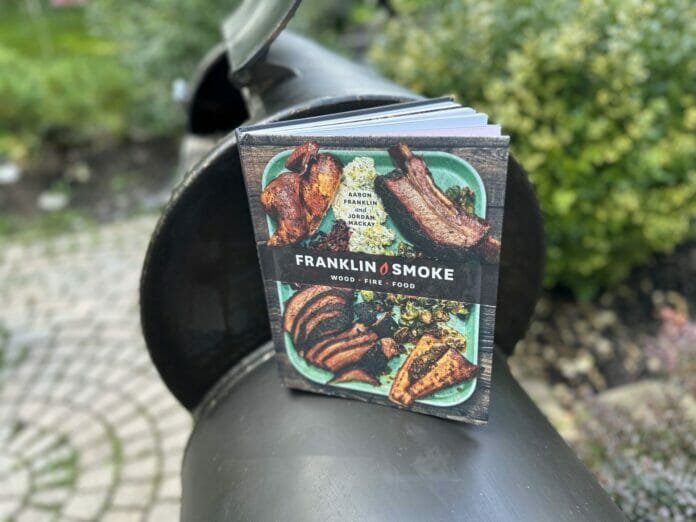When people think of legendary trilogies they often go to the original Star Wars films or The Lord of the Rings. A new trilogy was cemented though that has given me more enjoyment than any other franchise.
That would be Aaron Franklin’s books on barbecue. His first book, Franklin Barbecue: A Meat Smoking Manifesto, gives the backstory on the famed Franklin Barbecue restaurant and serves as a how-to for running a barbecue restaurant. It also has some fantastic tips for home cooks along the way.
The second book in the series, Franklin Steak, is an in-depth guide to steaks. It covers everything from sourcing steaks, different cuts, to the best way to cook them. It is a fantastic follow-up to the first book in the series.
The third, and final, book to complete the trilogy just came out a few months ago. It’s called Franklin Smoke: Wood, Fire, Food, and is the perfect compliment to the other two books. It’s purely focused on the home outdoor cook with recipes and how-to guides on grilling and barbecue.
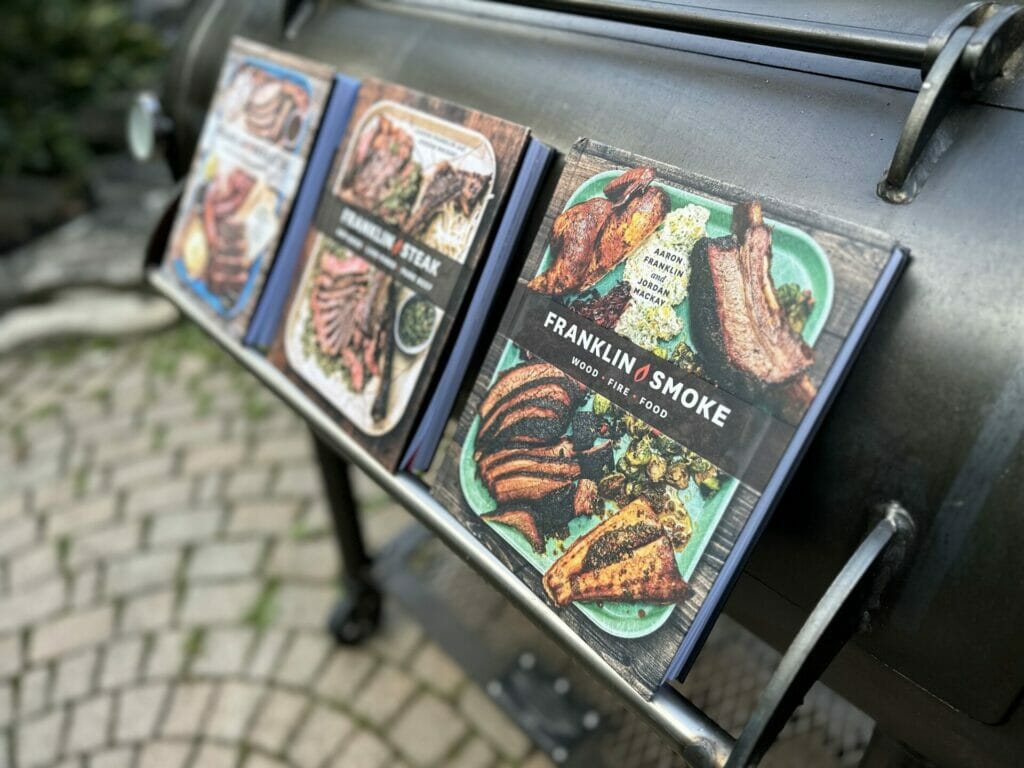
Inspiration Behind the Book
As I learned from talking with Aaron Franklin, the creative process for the book began during the pandemic.
we didn’t really have plans to make another Book but Jordan [co-writer Jordan Mackay] and I were talking during the pandemic and we were both stuck at home, doing a bunch of cooking and online videos, so it sparked interest in home cooking again
Aaron Franklin
Since founding Franklin Barbecue with his wife Stacy, Aaron hadn’t had much time to do home cooking.
ever since Franklin OPENED, I haven’t really been at home for more than 12 consecutive hours, so cooking bbq at home really hasn’t been much of an option. being around the House, thinking of recipes and doing online demos, while Jordan was doing the same, We both got pretty excited again about backyard cooking. it’s really an angle that we haven’t touched on much in the previous books
Aaron Franklin
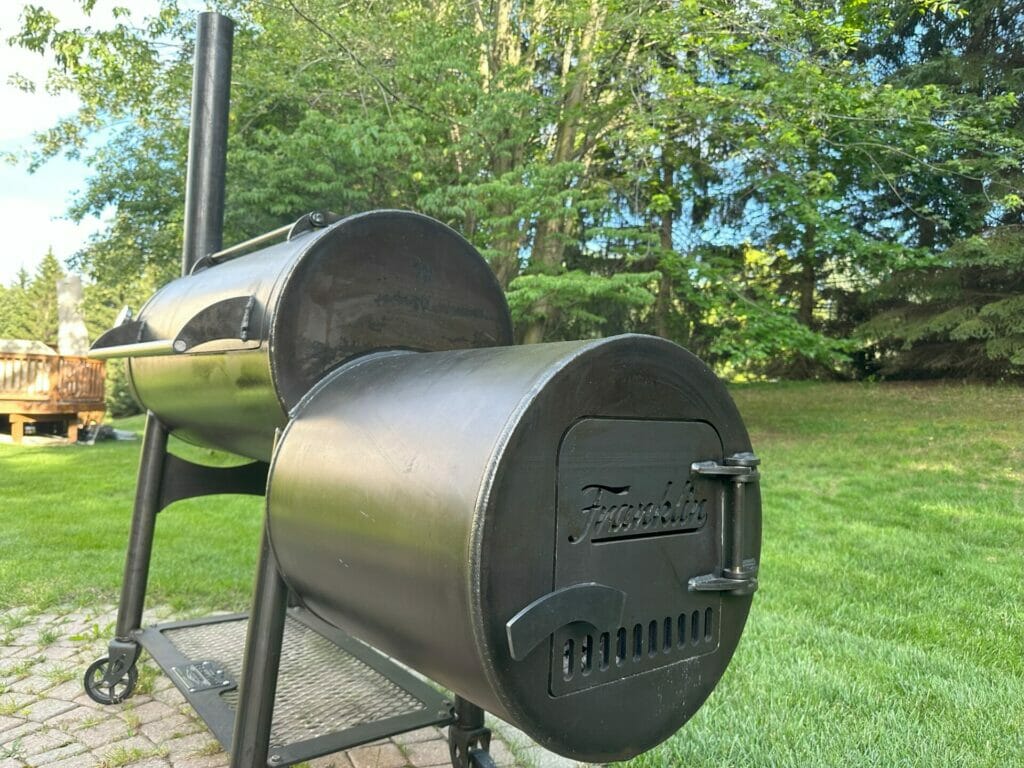
In Search of Tongs
Franklin Smoke goes through the whole process for outdoor cooking at home. It starts with an overview on grills and smokers, then transitions into information about wood and charcoal.
There is a chapter called “Warming Up” that goes over essential pantry items and tools for barbecue. While Aaron has a go-to tool for everything, there’s one popular accessory that he’s still searching for the best of, and that’s tongs.
For all the tong entrepreneurs out there, I asked him how to spec the best barbecue tongs.
MAKING THE PERFECT TONG IS really tough, we’ve been trying to design one for a while, BUT, THE manufacturing is so expensive for what I want. I just don’t think it’s possible, but ESSENTIALLY, I would do a 20 inch tong, it would be out of stainless, and it would have the kind of bear claw like the standard restaurant TongS. It also would be a lot stronger, so it’d HAVE TO BE STAMPED AND rolled. IT CAN’T FLEX MUCH, THAT’S TRICKY.
Aaron Franklin
Brisket Talk
There are a ton of great techniques and recipes in Franklin Smoke. It features a variety of rubs, sauces, sides and even seafood like oysters and branzino.
Undoubtedly though, many people will be interested in the traditional barbecue content, and of that there is lots. While Aaron Franklin’s first book, Franklin Barbecue: A Meat Smoking Manifesto, had a 14-page brisket recipe, Franklin Smoke has a 16-page updated recipe.
The brisket stream of consciousness starts at the beginning, with choosing a brisket, and goes through all the steps through resting and serving. What’s great about the technique in the book is Aaron Franklin uses a Franklin BBQ Pit for cooking. That means not only can you match his technique, you can even do it on the pit he uses for optimal results.
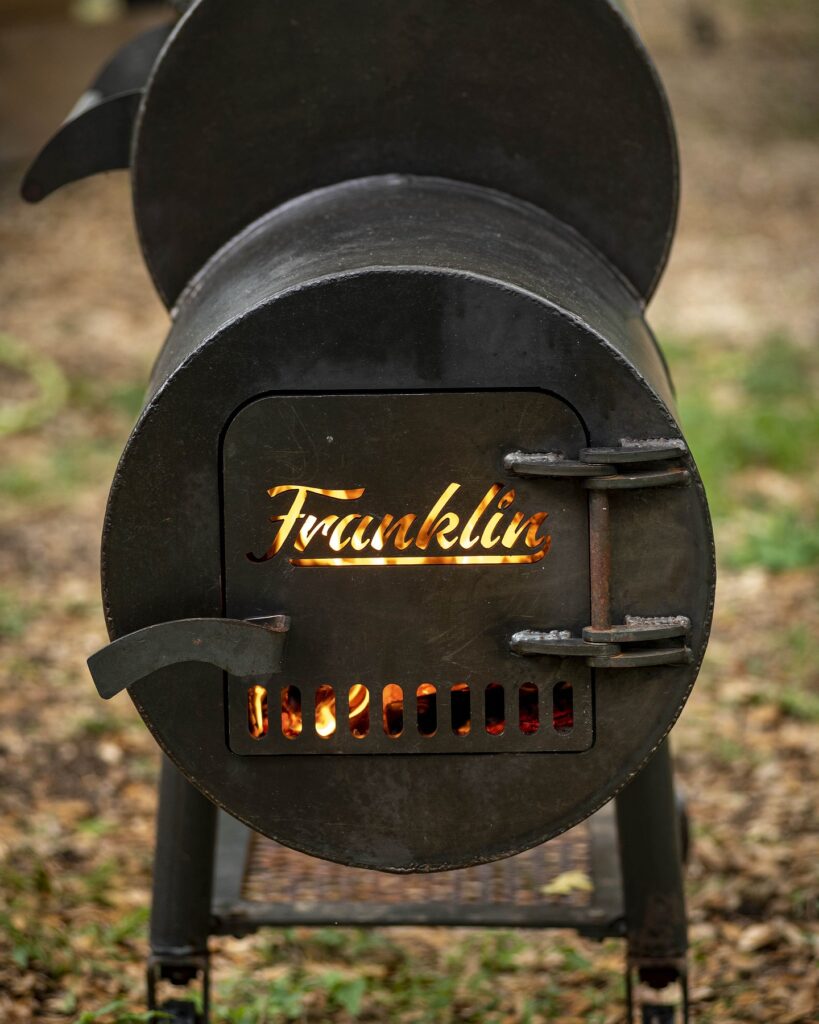
For those not familiar with the Franklin Barbecue Pit, Aaron Franklin created a line of traditional offset smokers for backyard use. They use thick, 1/4″ steel, and have even been engineered so the smokestack is positioned for perfect brisket height. I have one, and it’s an amazing cooker that makes me seem much better at barbecue than I actually am.
The brisket recipe in Franklin Smoke is exhaustive, but I had some self-indulgent questions about the important topic of resting a brisket.
When you pull a brisket or any piece of meat off the cooker, it doesn’t mean the cook’s over. it’s gonna carryover, it’s gonna keep cooking, the fat is going to continue to render. that all happens during the the carryover and the rest, and really you don’t wanna rush rest. when I walk in the doors in the morning at the restaurant I can smell if it’s gonna be a good day by how the briskets smell and rest. the fat gets a little sweeter if it sits just right.
Aaron Franklin
What’s tricky about knowing when to pull a brisket for resting is the temperature outside is always different. This is true all the time, but especially so if you’re cooking in winter.
pull it early in the summertime, and you let it go a little further in the winter time, because you gotta compensate for the carryover. you have to think about the trajectory of where that thing’s going. if you’re cooking really hot and you pull the brisket off a little early it’s gonna carry over a little further, but the rest is gonna take a little bit longer.
Aaron Franklin
Part of the resting process is also being aware of where the brisket is being rested. As I learned, that’s key to trajectory.
don’t try to force it to do something it doesn’t want to do, like don’t pull out a brisket and put it in an air-conditioned cold room, don’t set it out in the sun on the stainless table on a summer day like you would when the climate is more mild. more humidity is better definitely, but don’t put it in a cooler, and don’t put it right into a warmer. you wanna let it climb and carry over and then descend. you want to just visualize when that internal temperature will land at about the 140-145 range. 140 to 145 is the sweet spot for holding.
Aaron Franklin
At Franklin Barbecue, they rest the briskets on sheet trays on speed racks in the restaurant. That’s where they’ll rest until the person comes in to cook ribs, and they’ll take the temperature of every brisket, one by one. When they’re fully rested, they go into warmers that are set to 142° F.
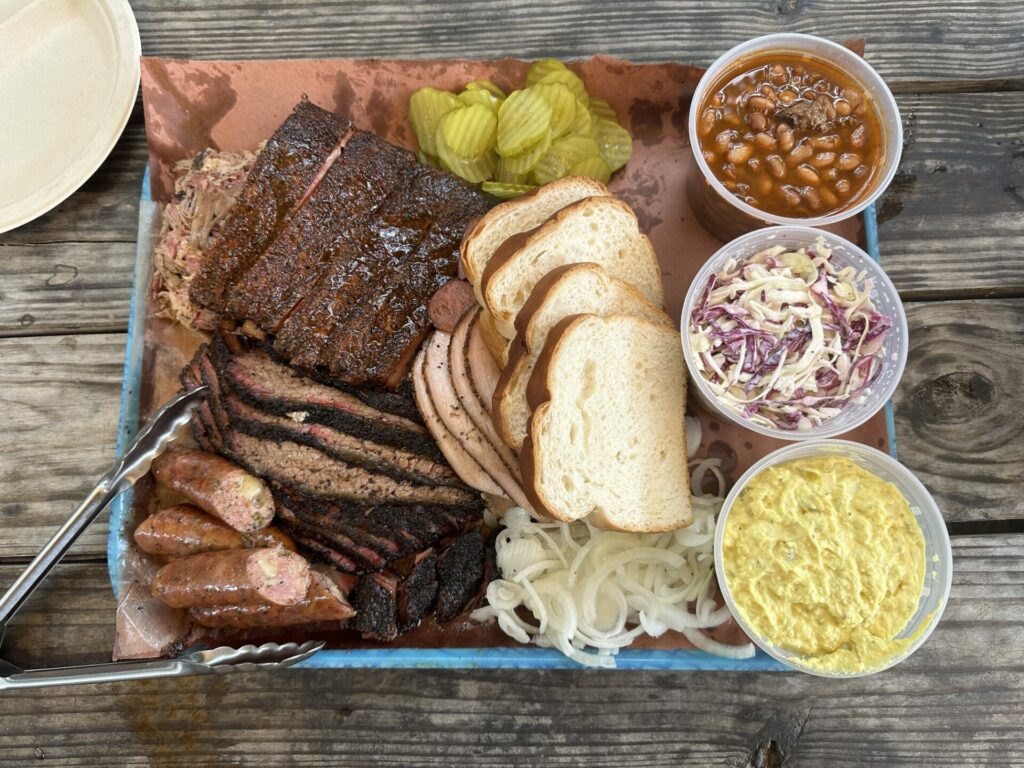
Re-Heating Brisket
If you don’t have the patience to cook your own brisket, and you aren’t going to be in Austin, TX, you can buy a Franklin Barbecue brisket from Goldbelly. It’s a delivery service that ships them vacuum sealed and chilled to your doorstep.
Whether you’re ordering through Goldbelly, or you’re following the Franklin Smoke technique to cook a brisket for multiple meals, proper re-heating is essential for preserving that delicious flavor.
The best way for sure is to use an oven and I figured this out doing the goldbelly stuff. I used to really think that doing it in a vacuum bag and using an immersion circulator was the way to go, turns out I was wrong it is 100% the oven because it dries out the crust again. pull it out, cut it out of the bag, or remove the foil from your fridge, and let it temper a little bit. then, set your oven to about 225, put the brisket on a sheet tray in there, and then clarify some butter, some oil, or some kind of fat, and just pour a little bit of fat over the Bark. it’ll recharge the bark on the brisket and it’ll also kind of keep it from drying out.
Aaron Franklin
Food safety guidelines recommend reheating to an internal temp of 165° F, but given what Aaron said about how they rest briskets, I’d probably shoot for an internal temp around 140° F. To each their own though when it comes to what you’re comfortable with about food safety.
When you’ve sliced off the amount of the brisket you want, Aaron recommends leaving the rest unsliced. Then, wrap it tightly in plastic wrap so it resists oxidization.
Go Buy the Book
If this is your first-time hearing about Aaron Franklin, or if you’ve waited in line at Franklin Barbecue many times, Franklin Smoke is a great read. It will help you get better at the craft of barbecue, or just appreciate it more when ordering it.
The book is filled when many cool pictures to break up the text, so it’s an easy and enjoyable read. You can buy a signed copy on at the shop on Franklin Barbecue’s website.
